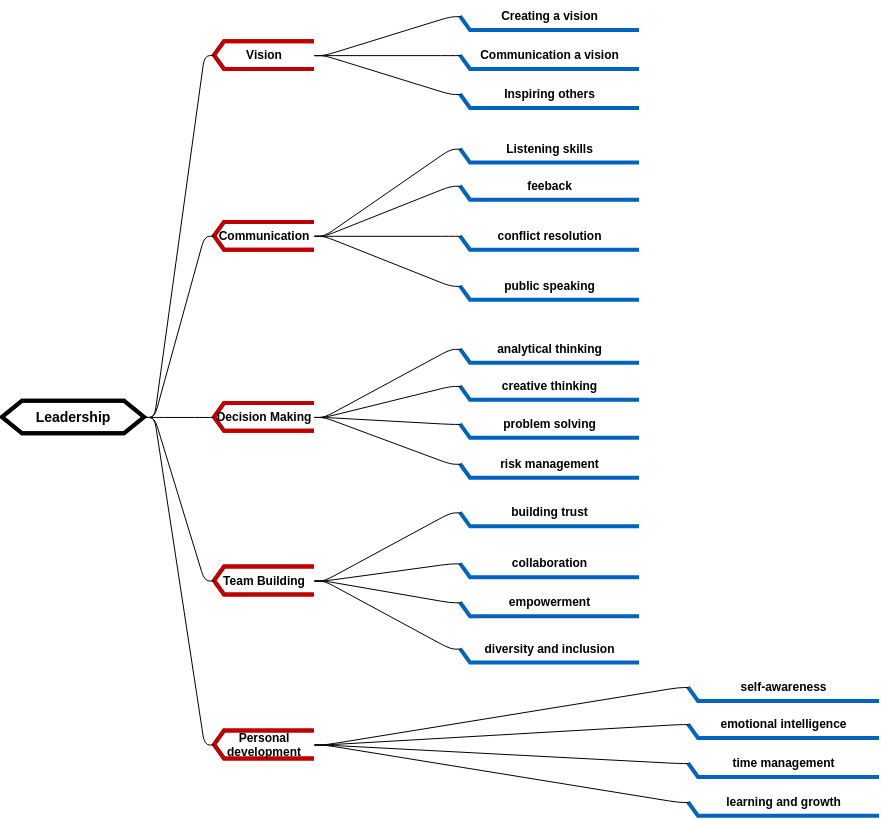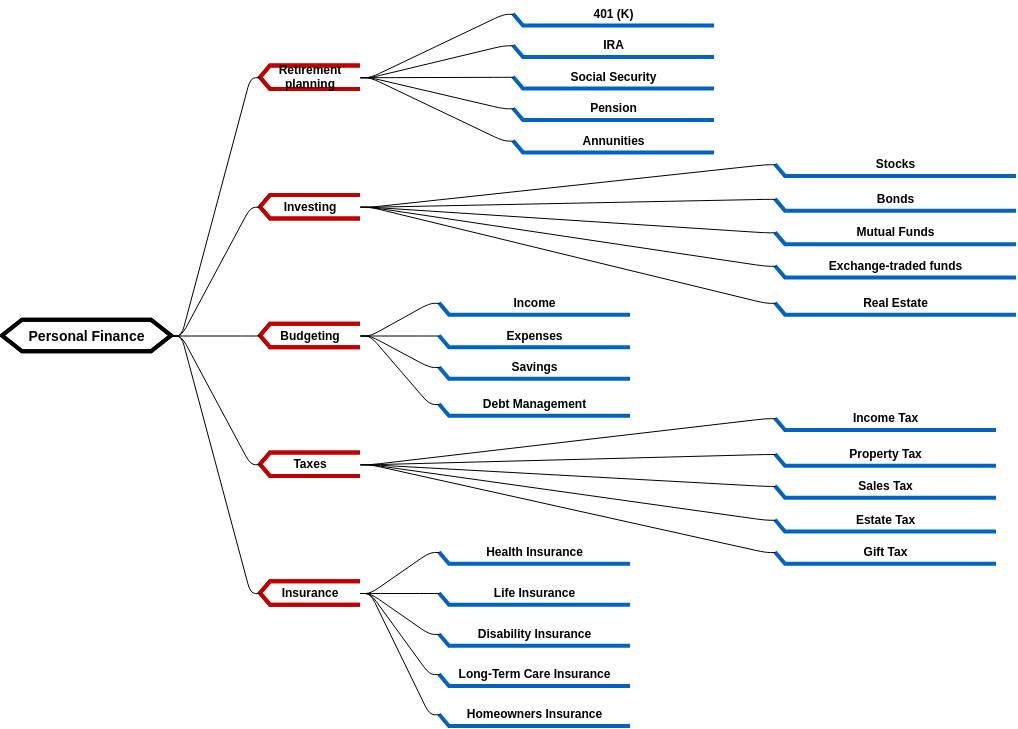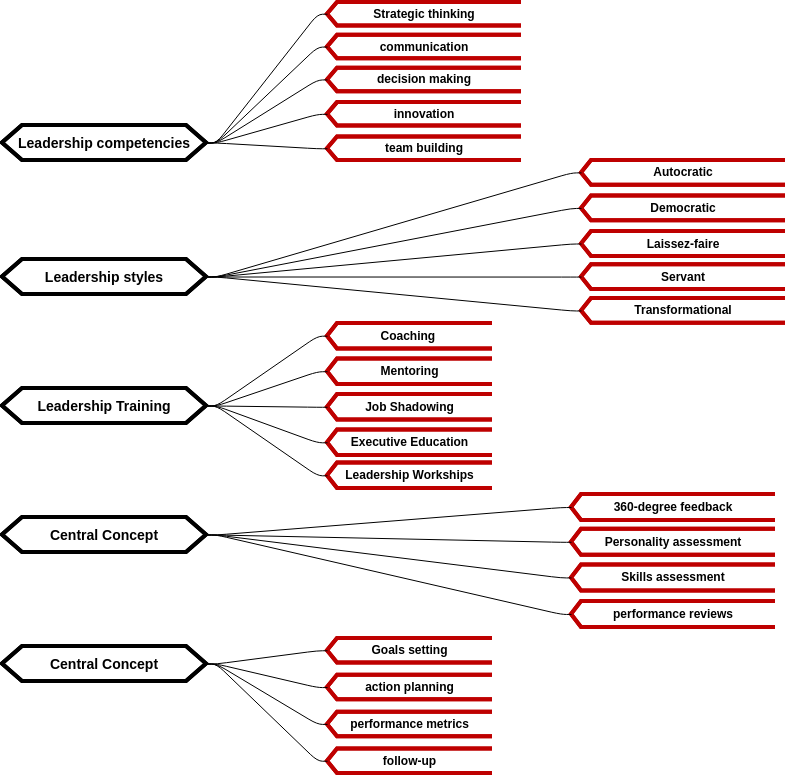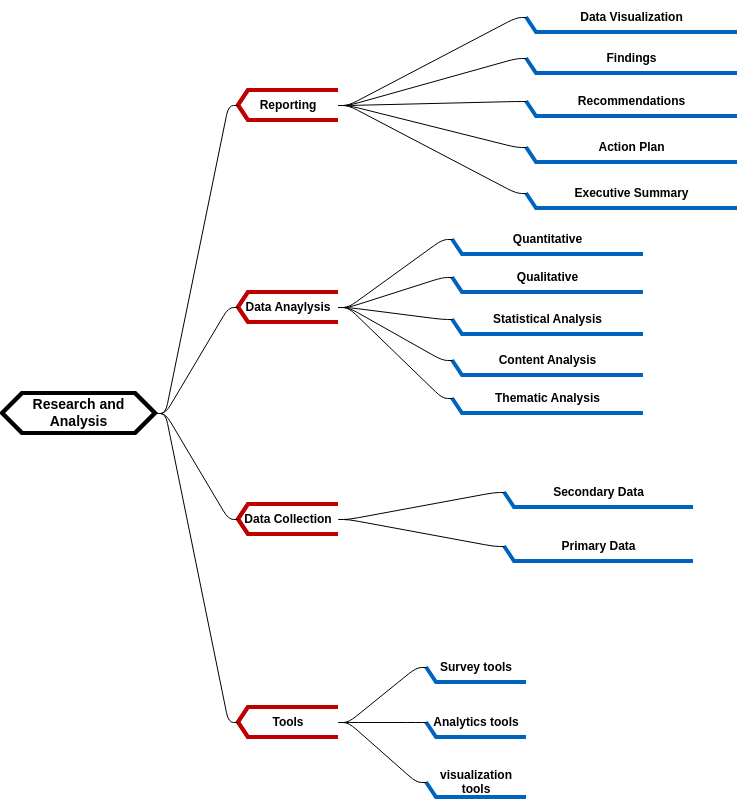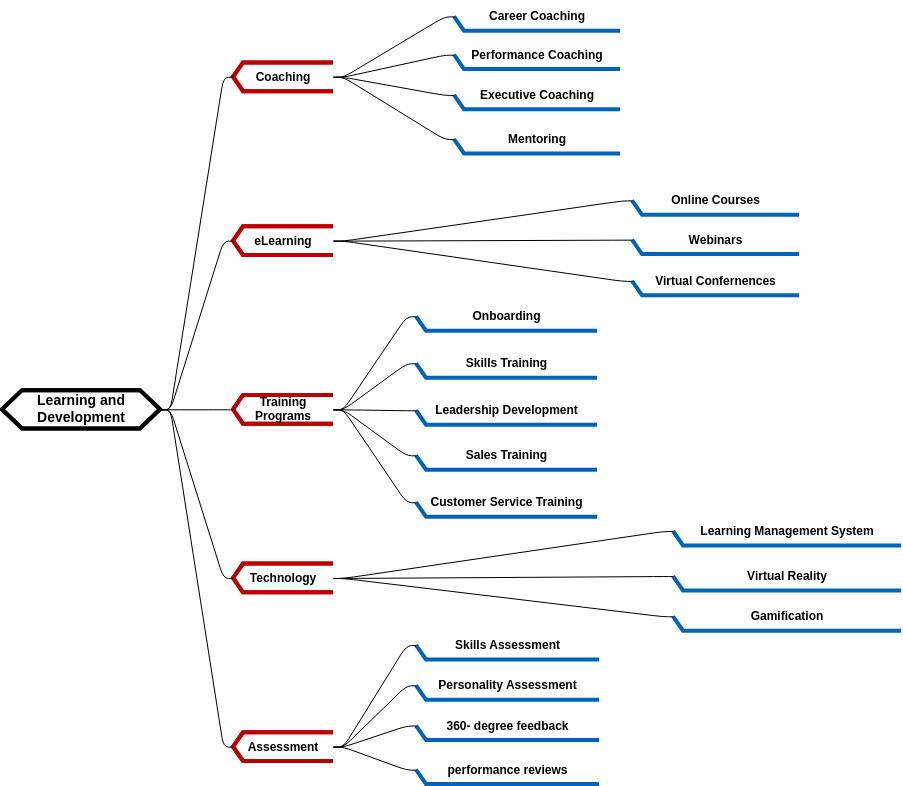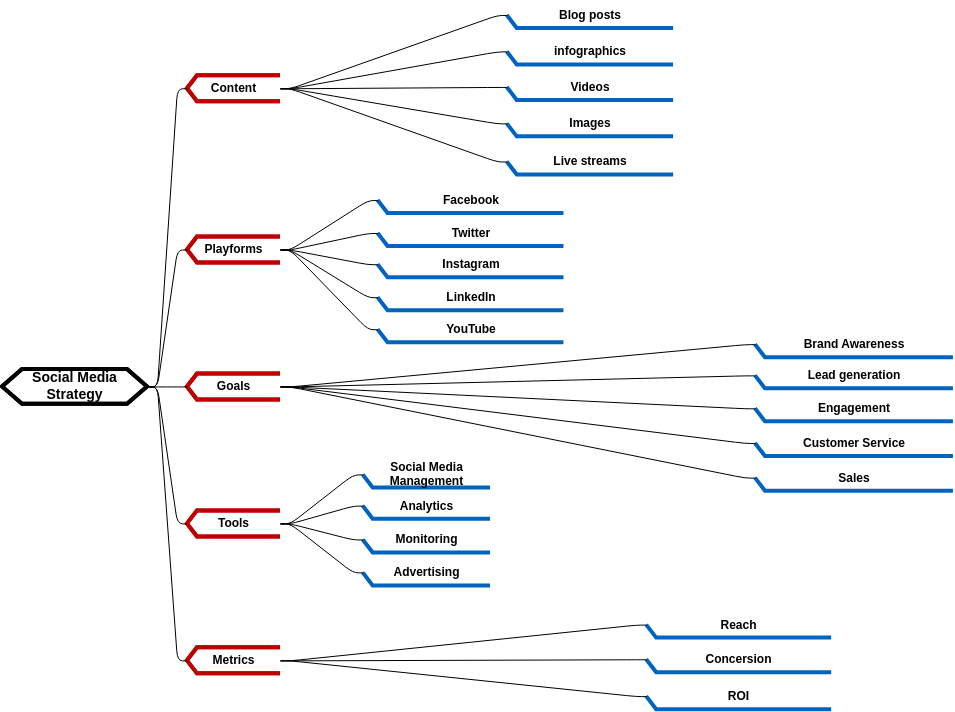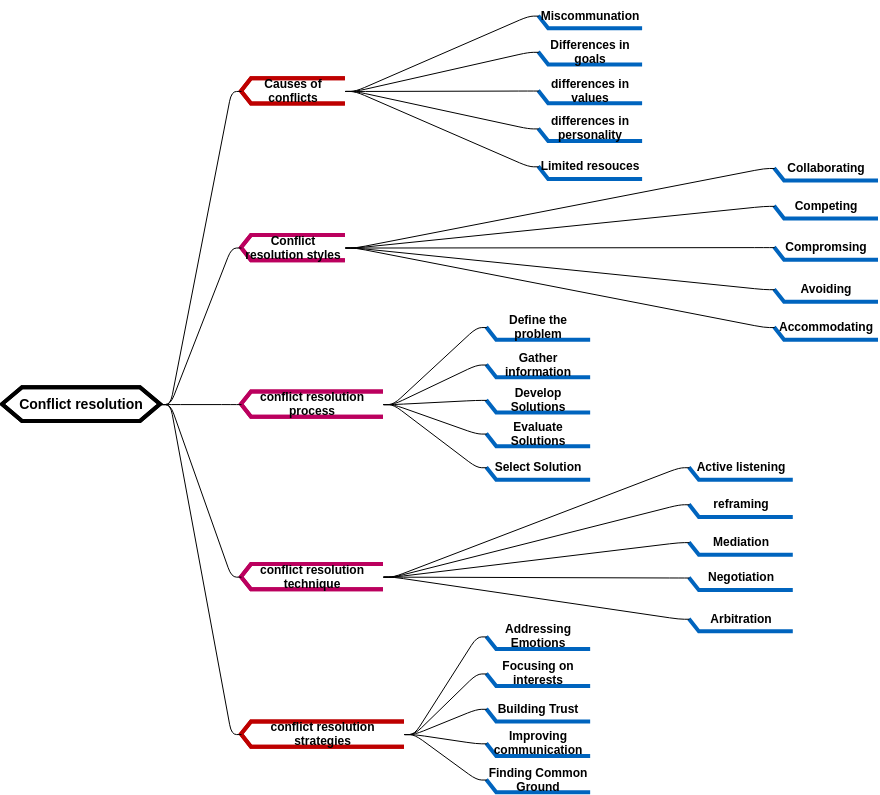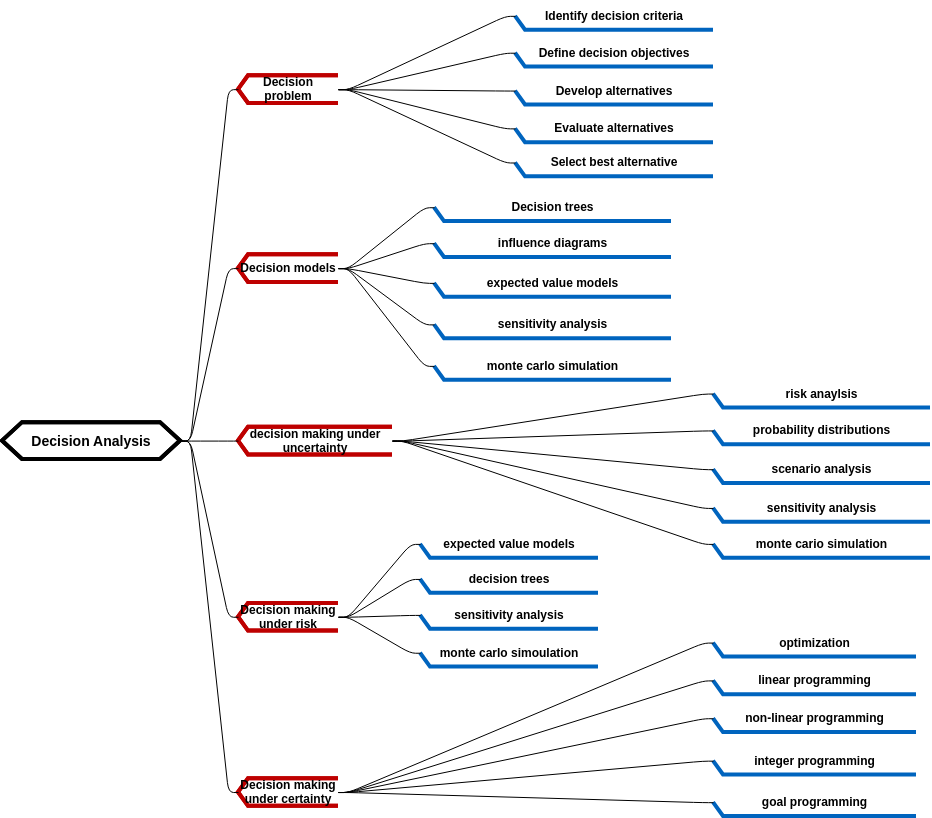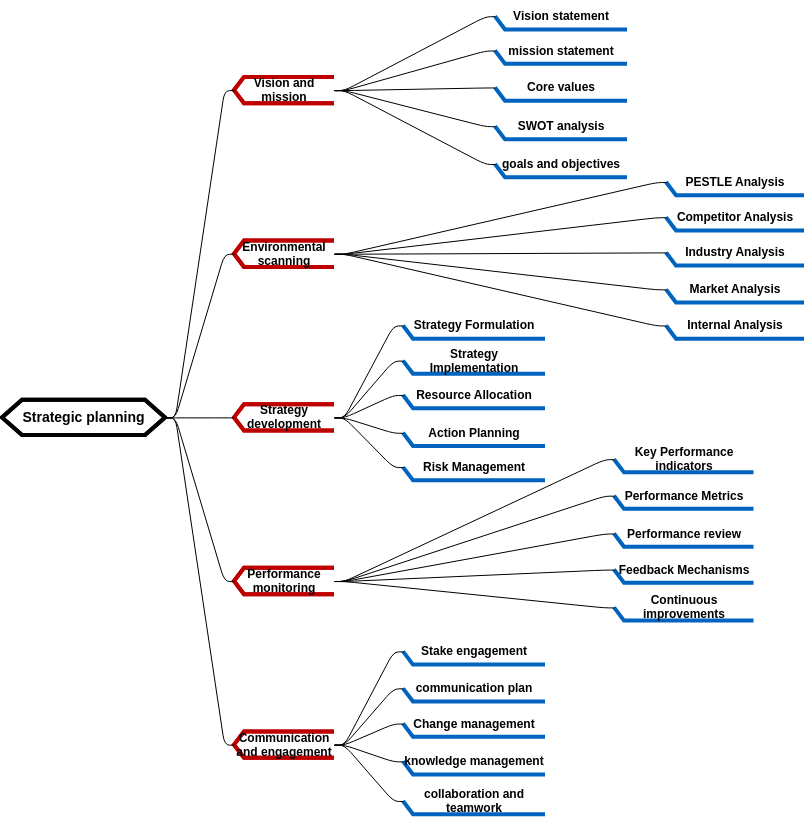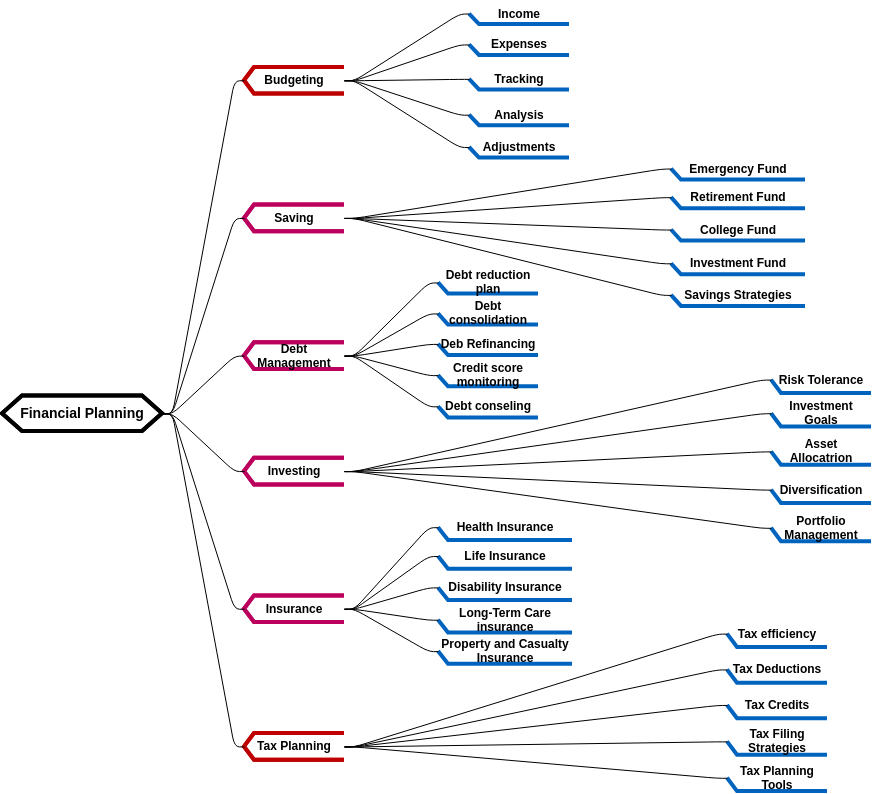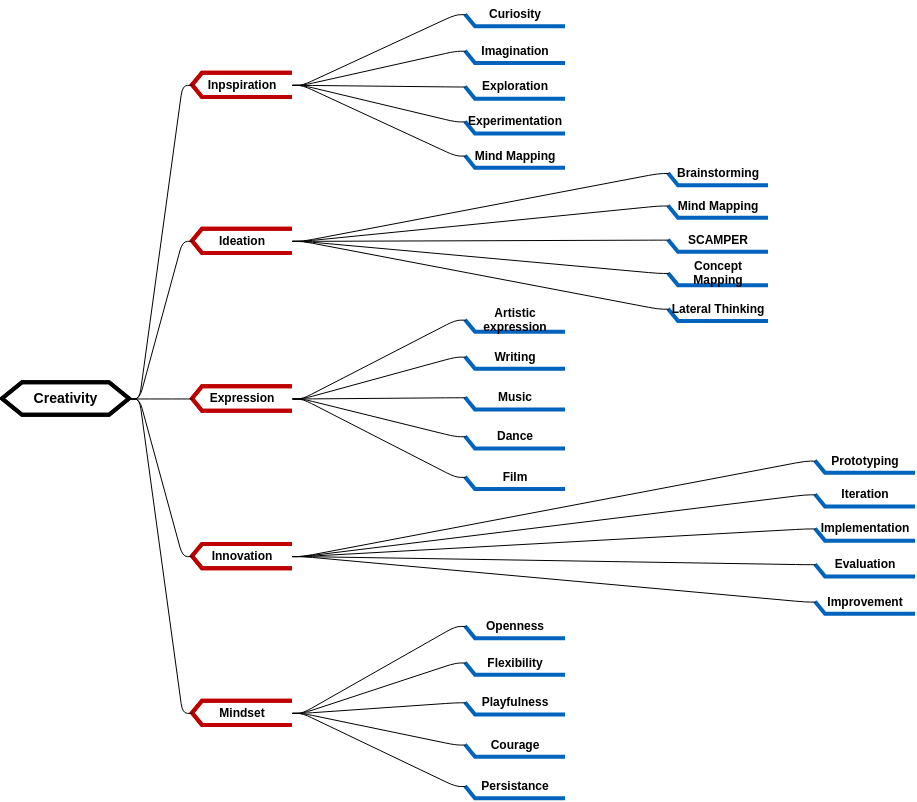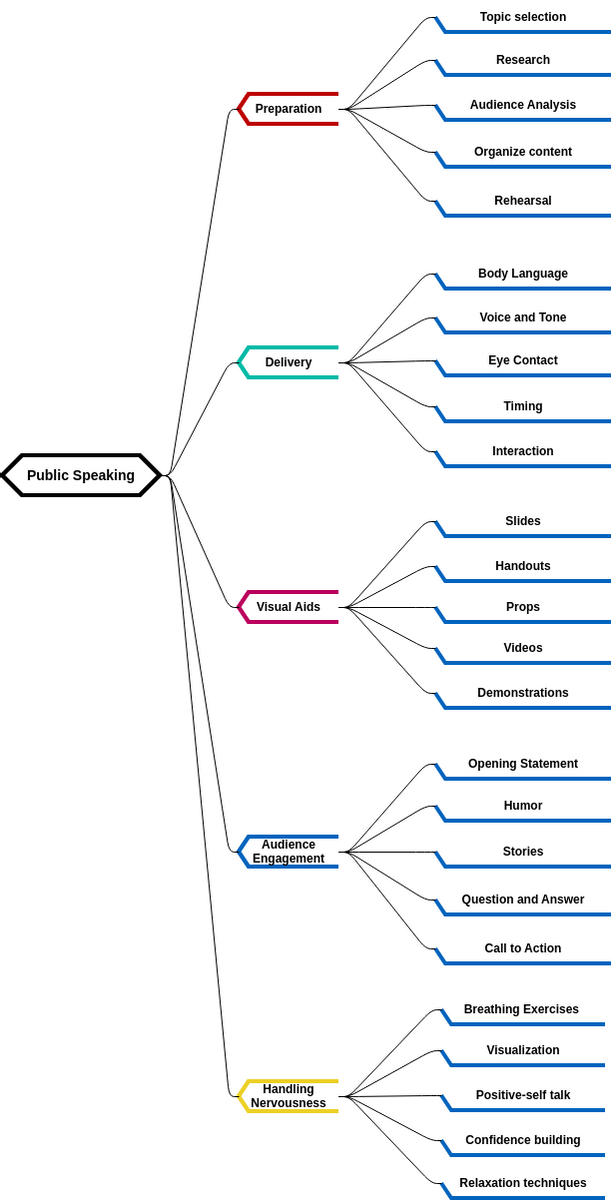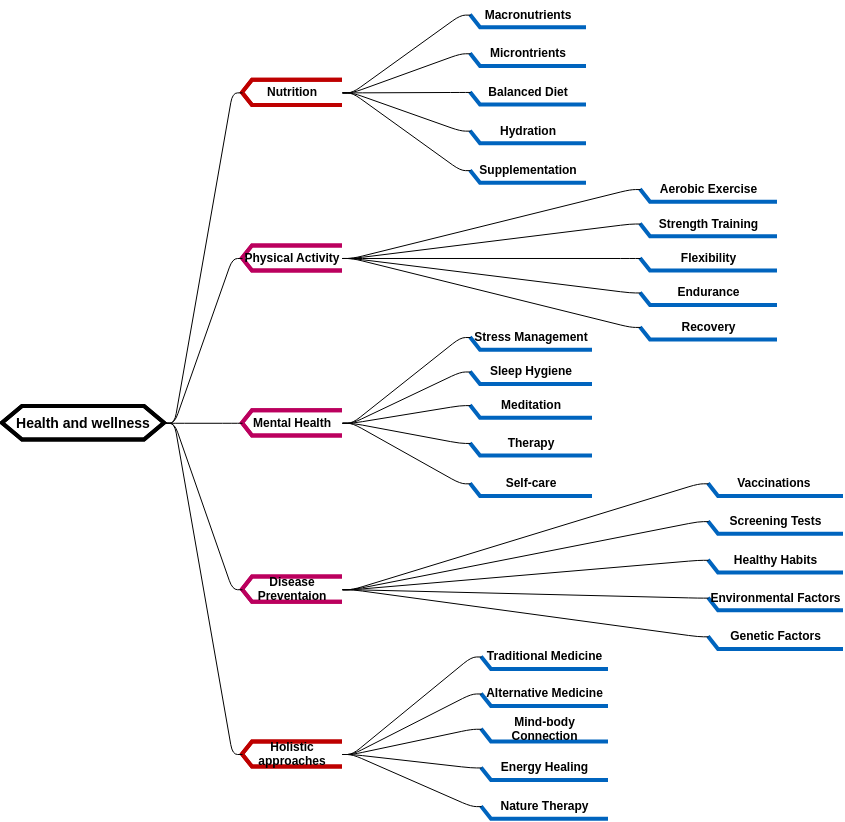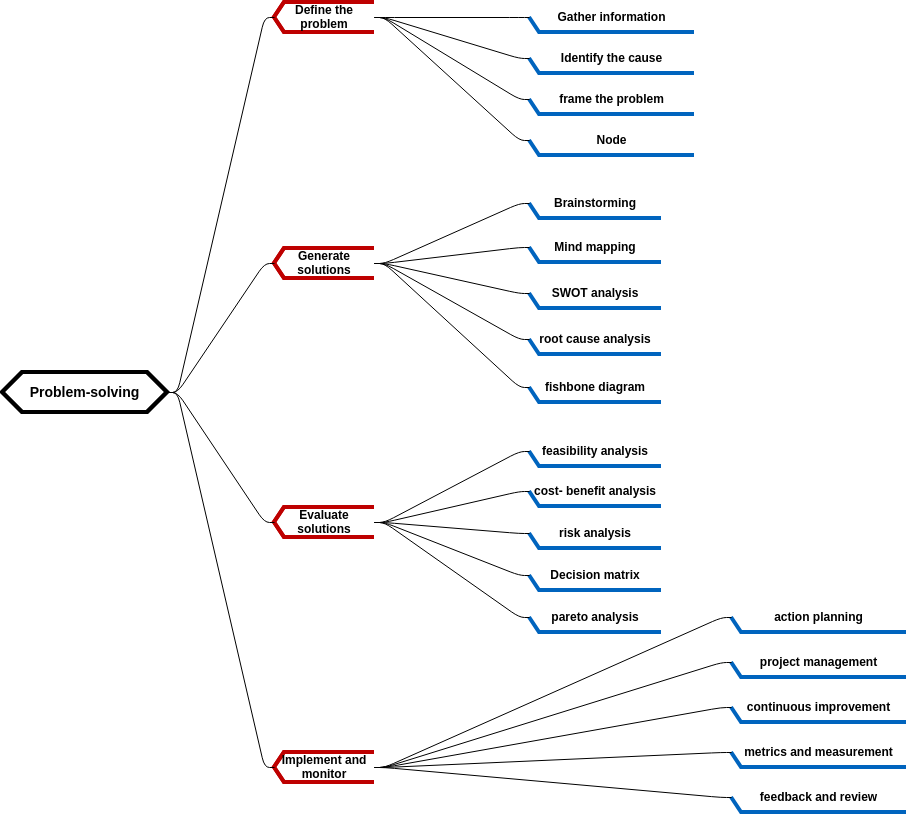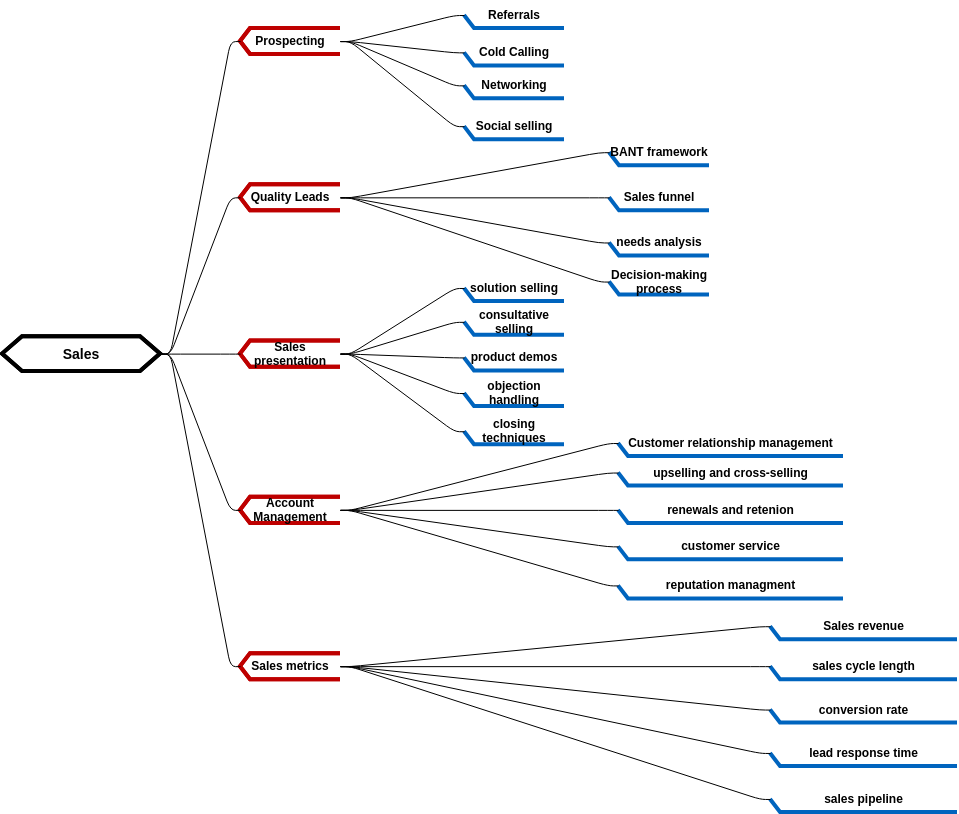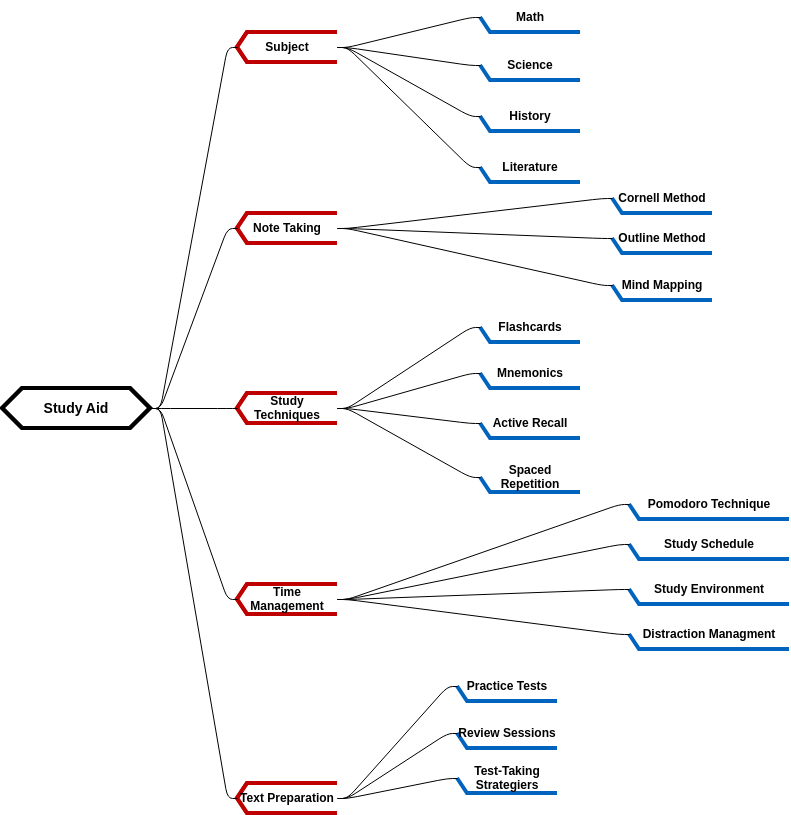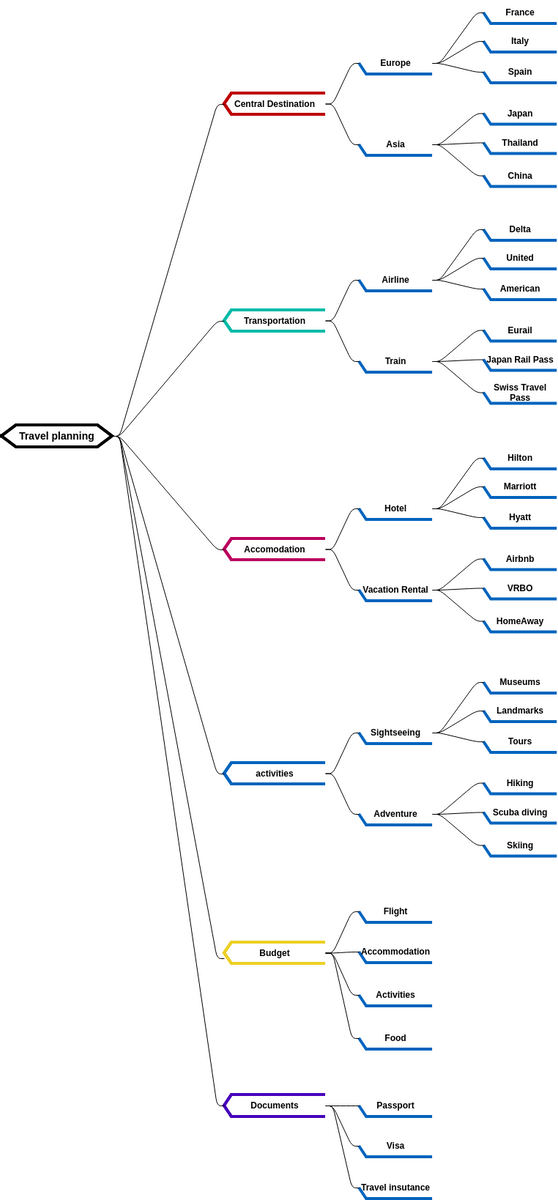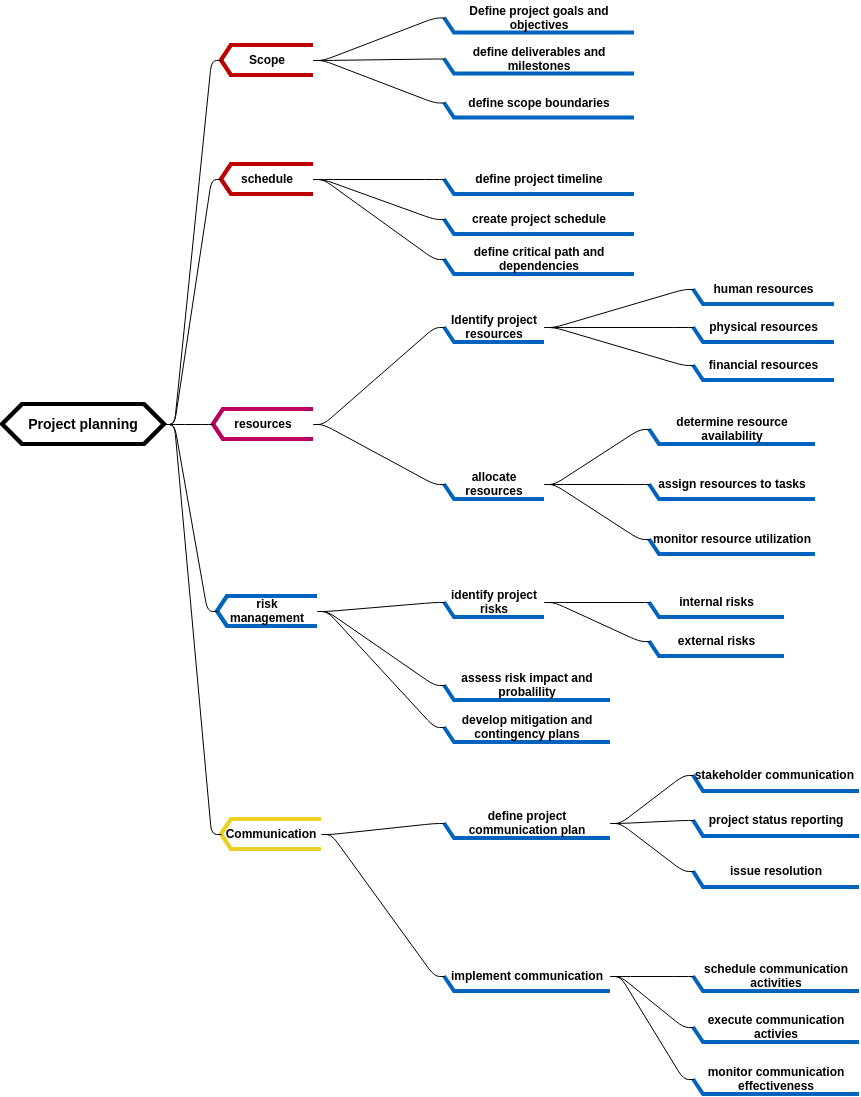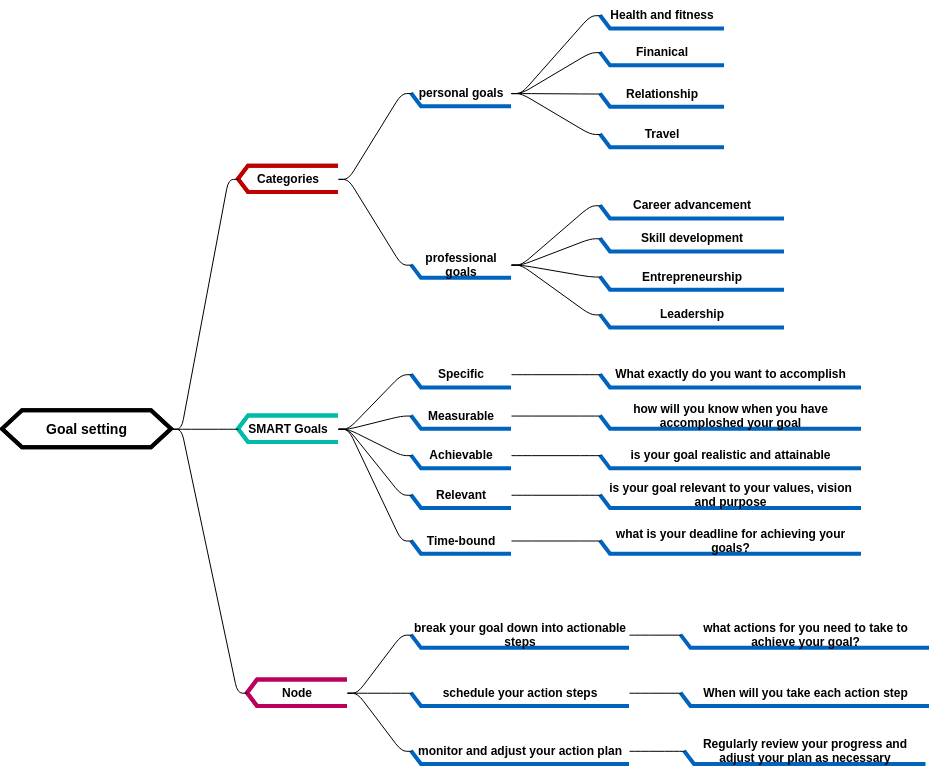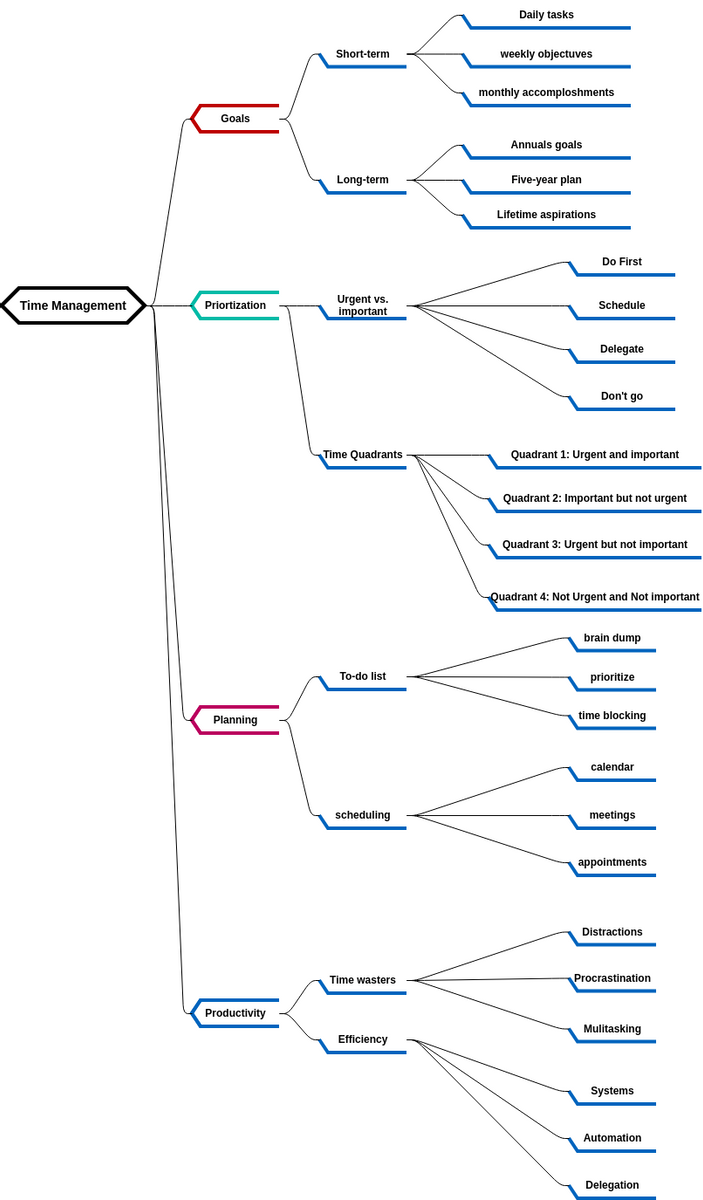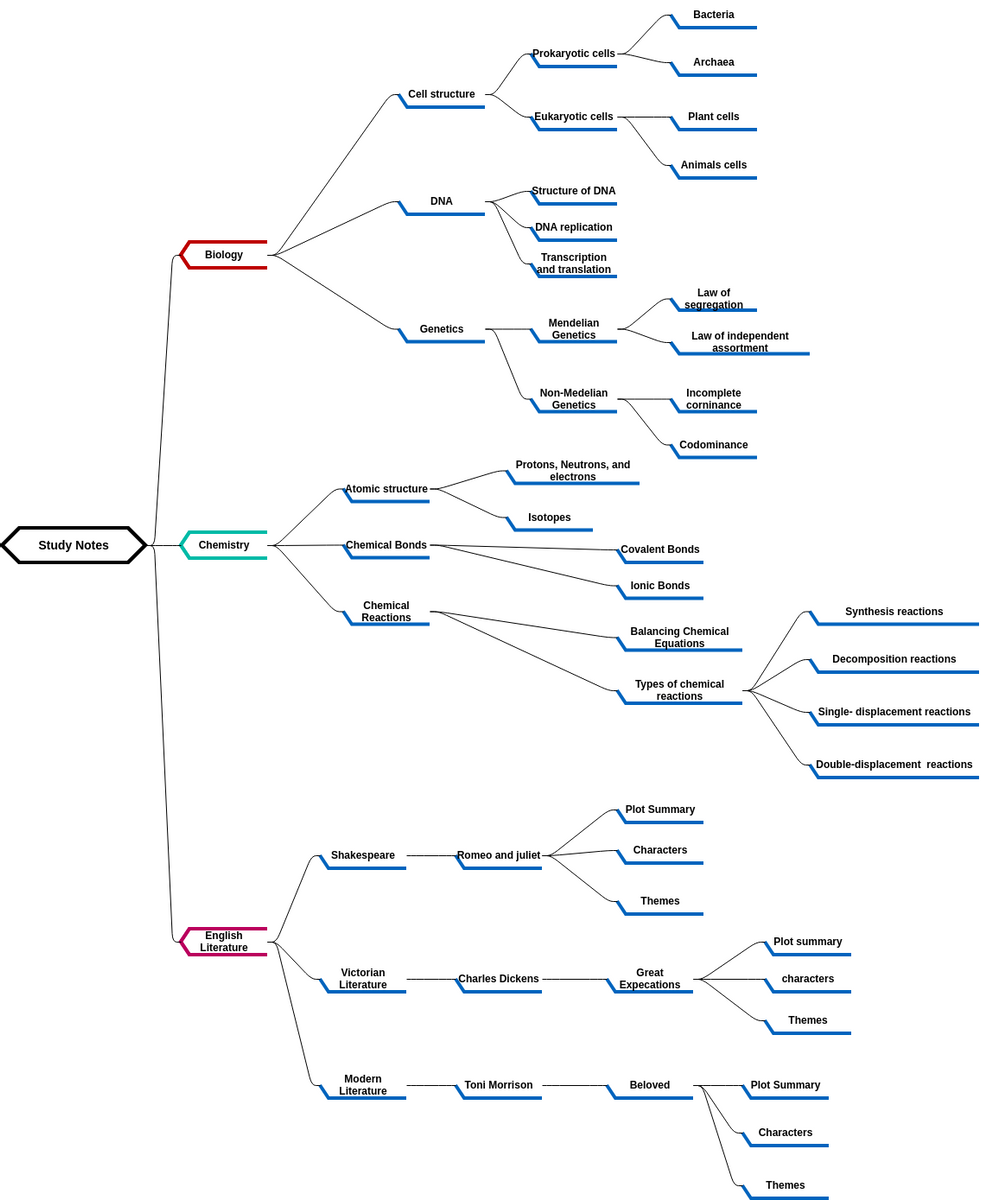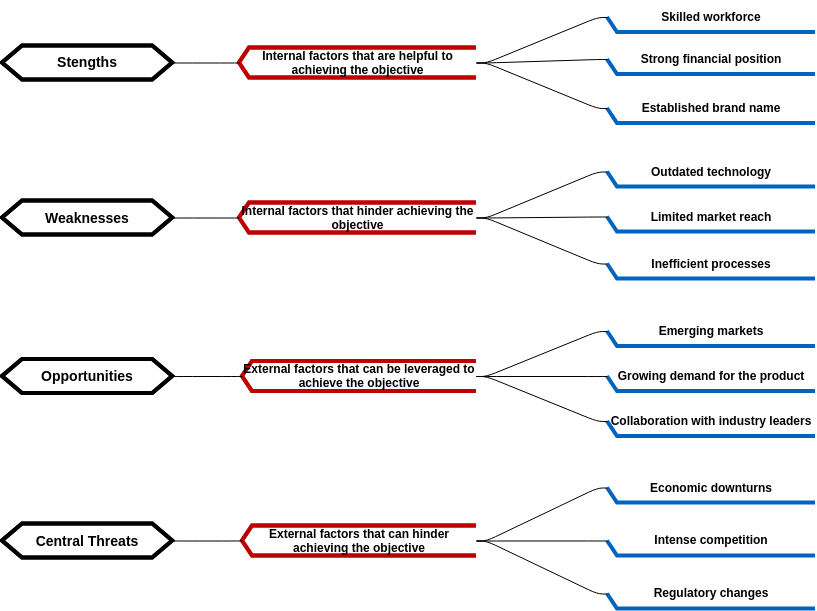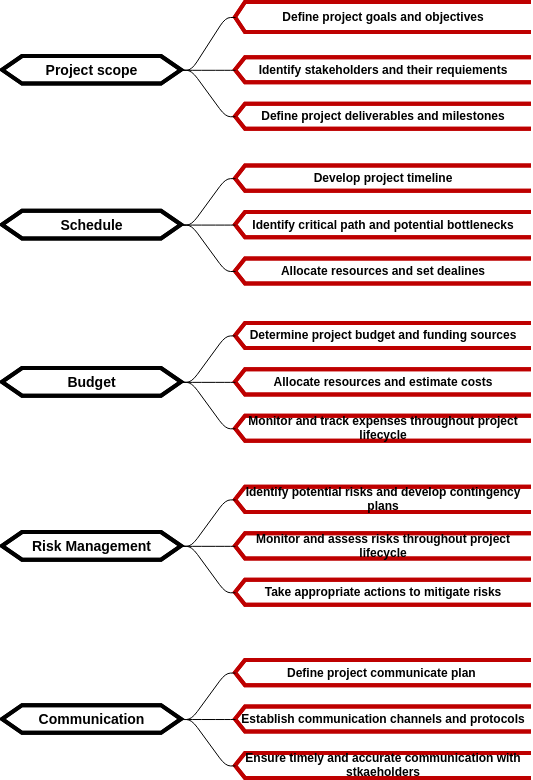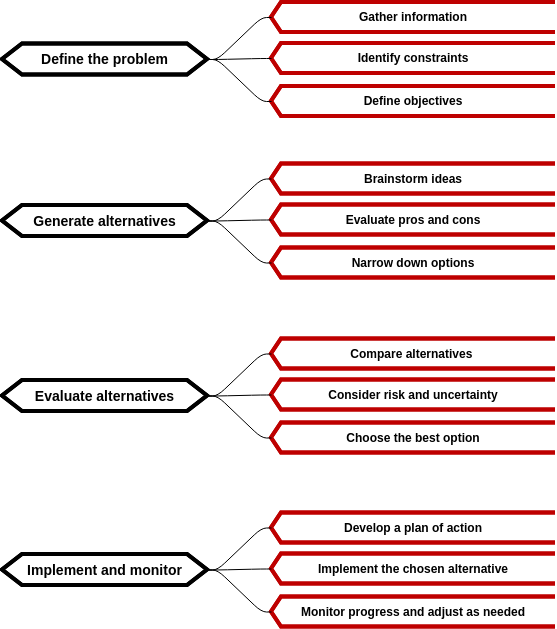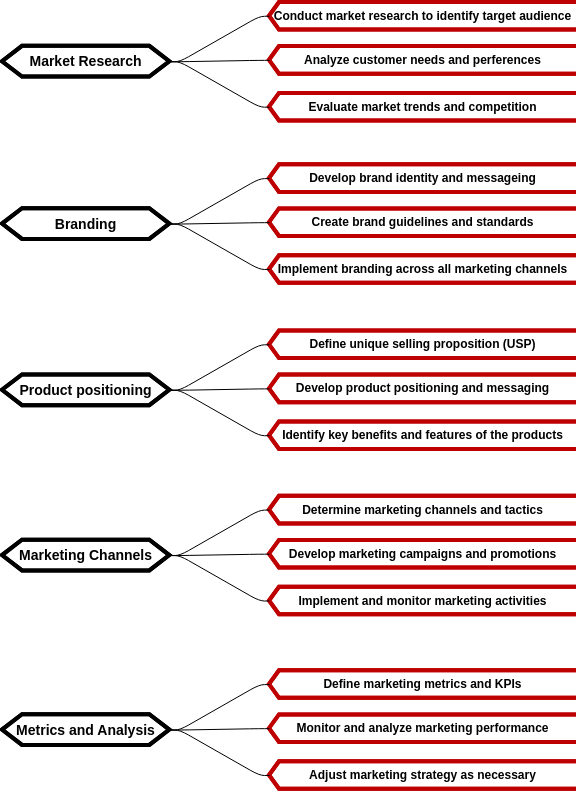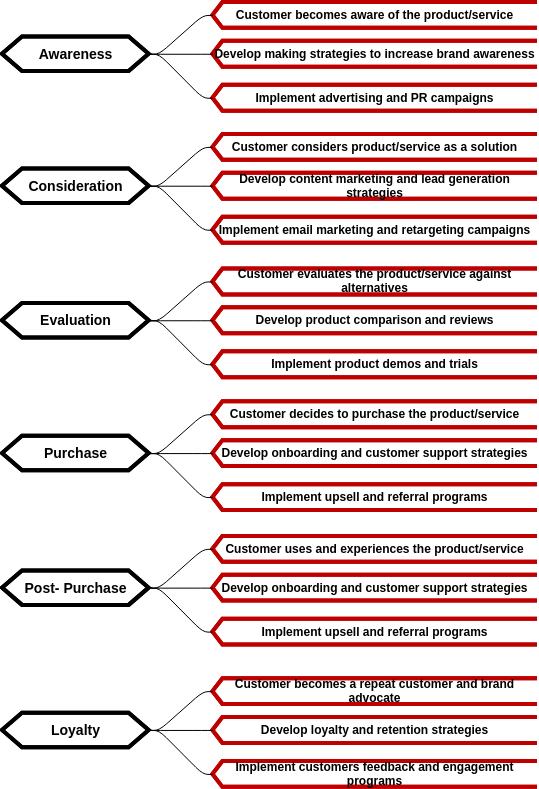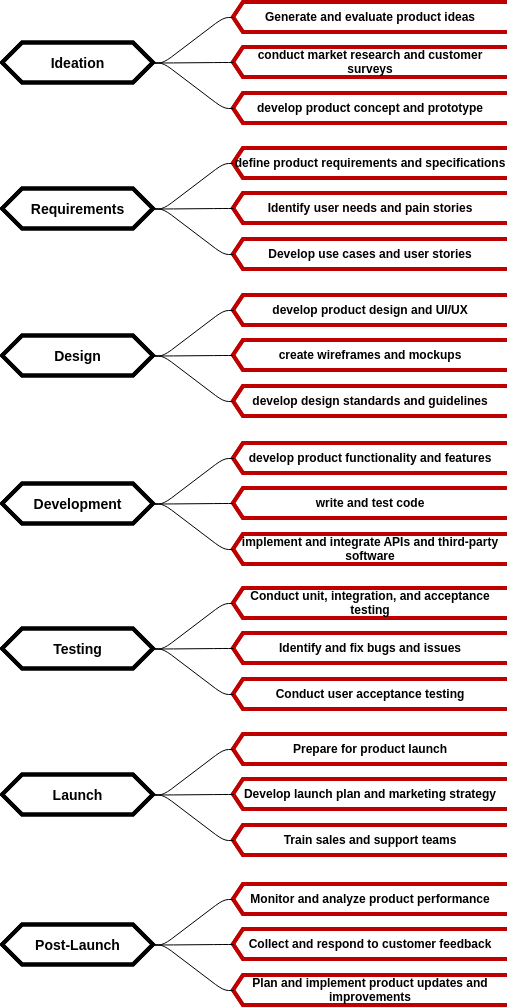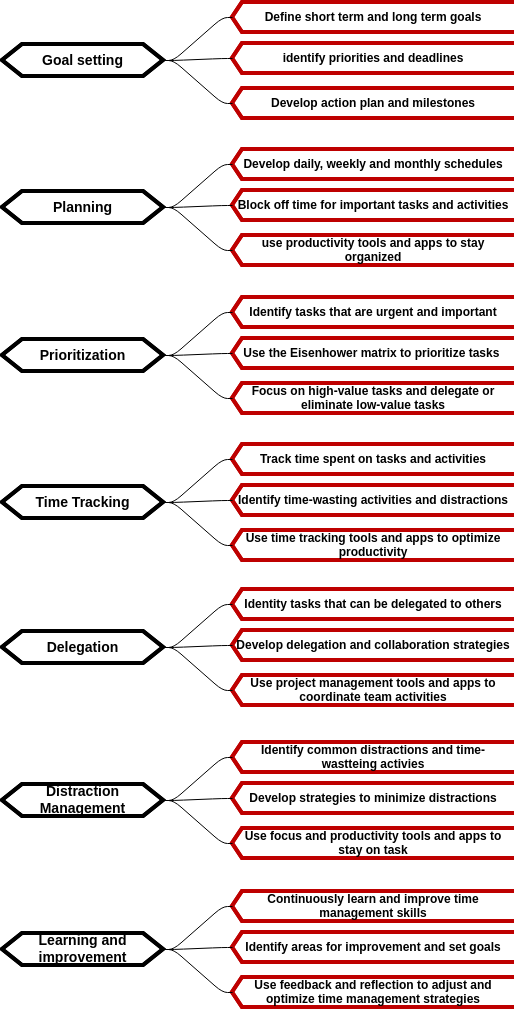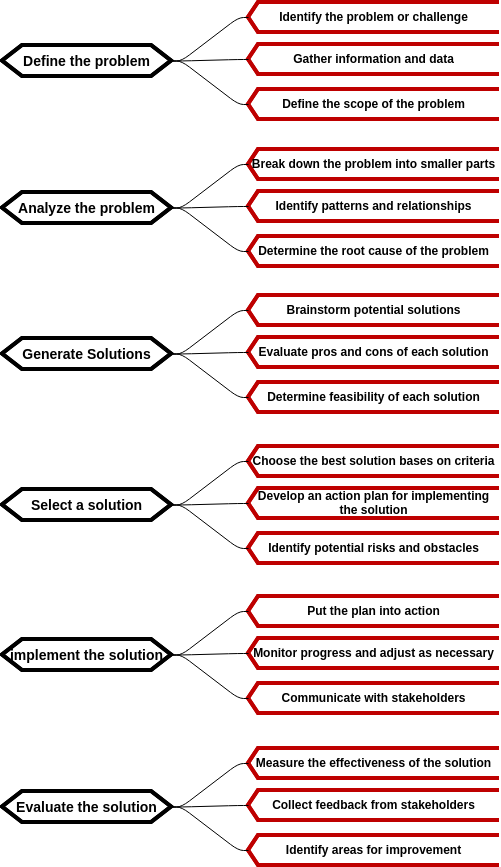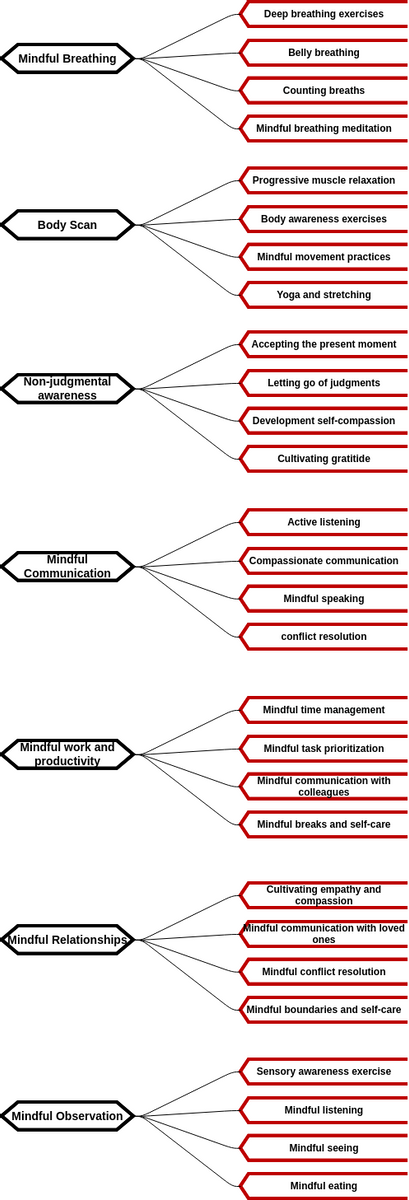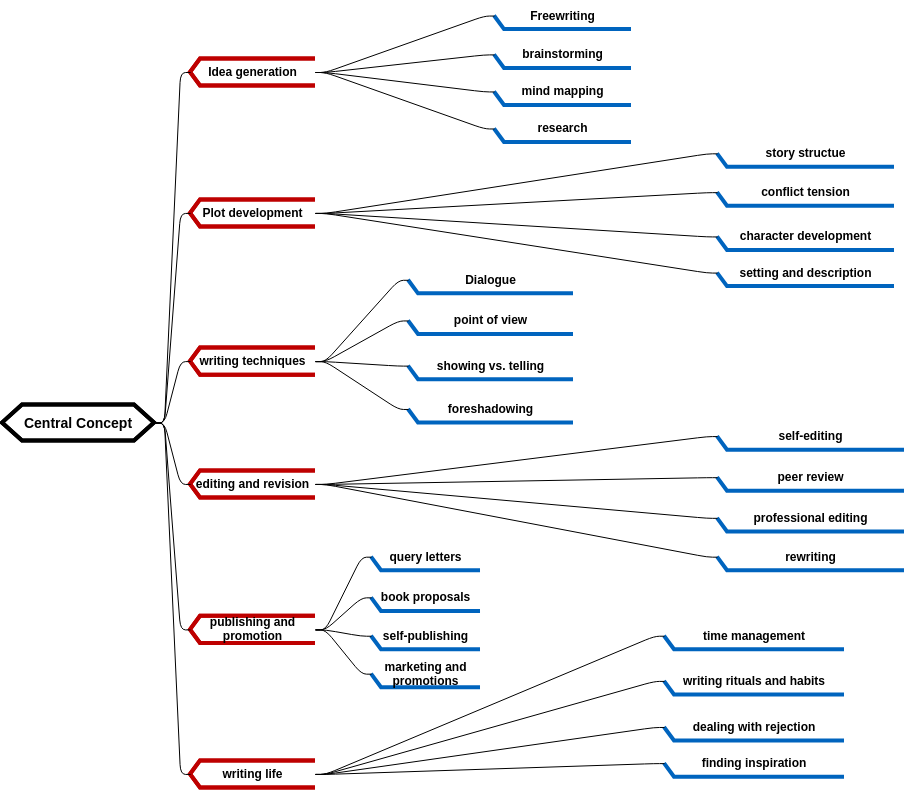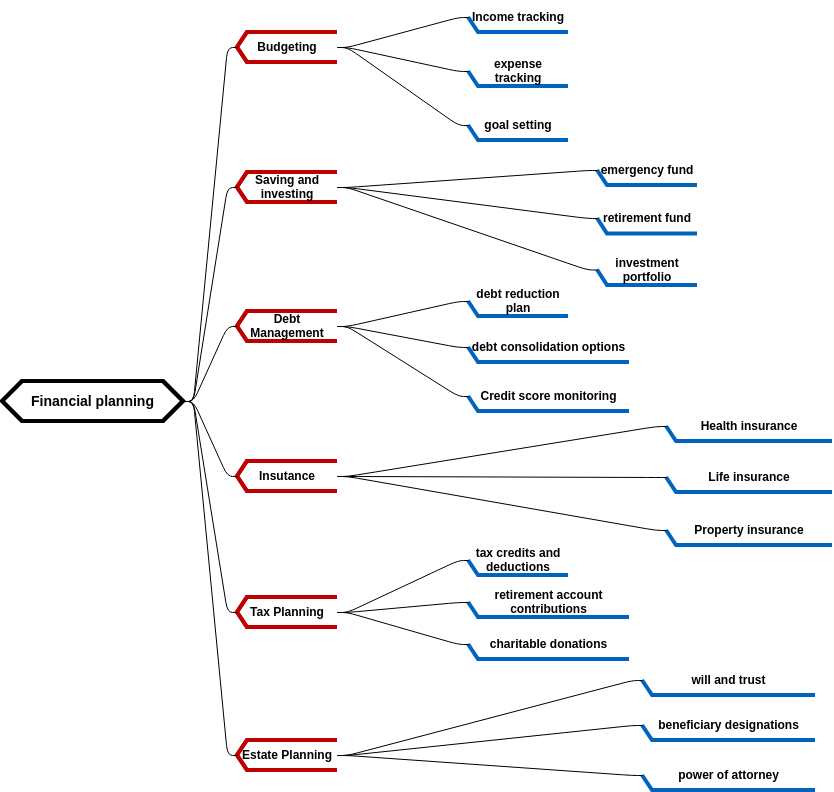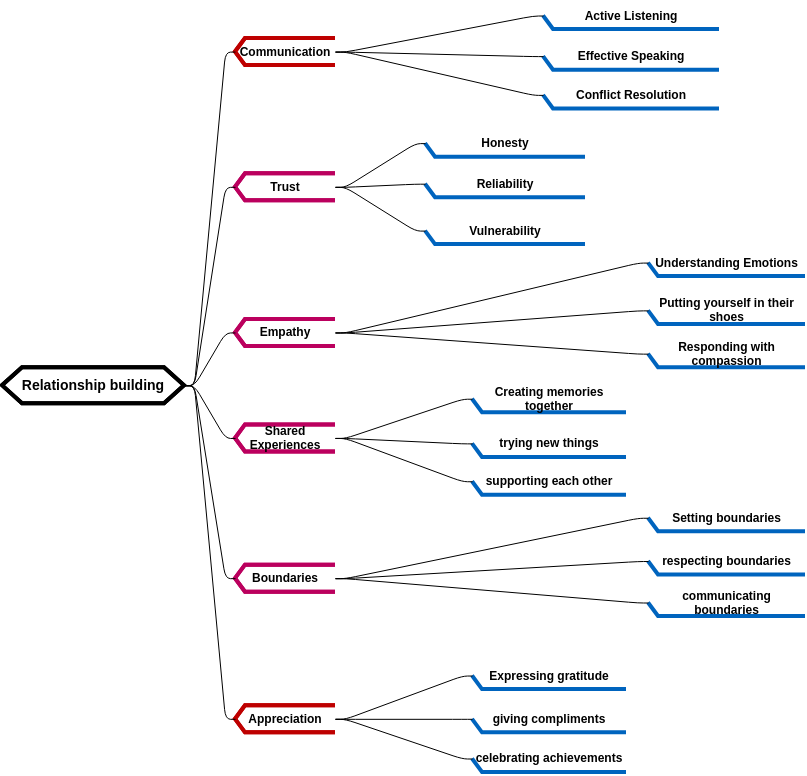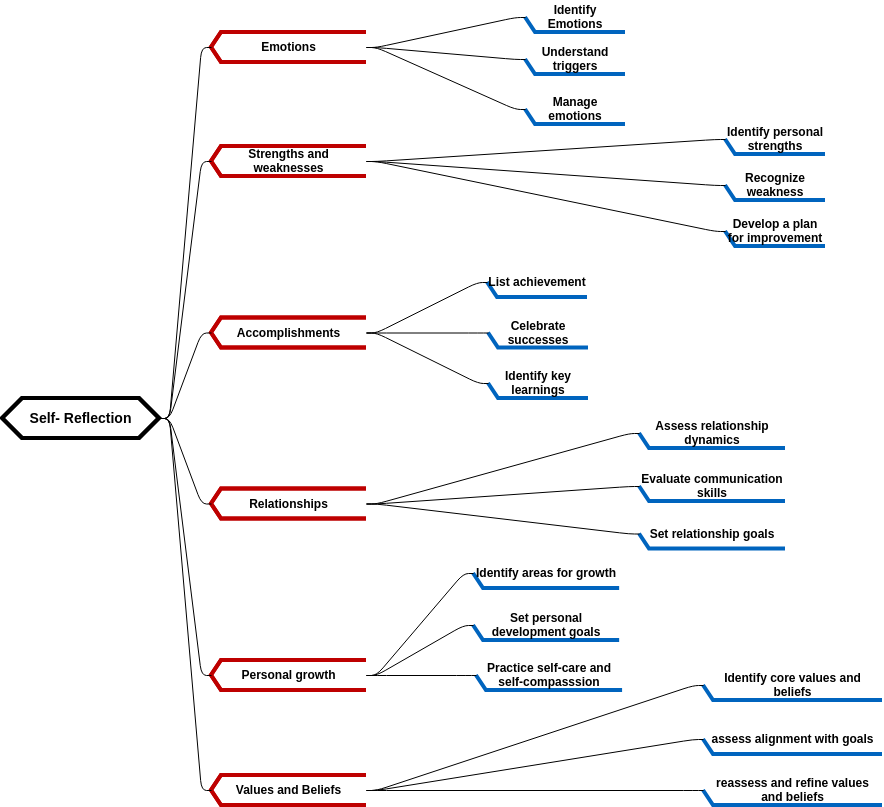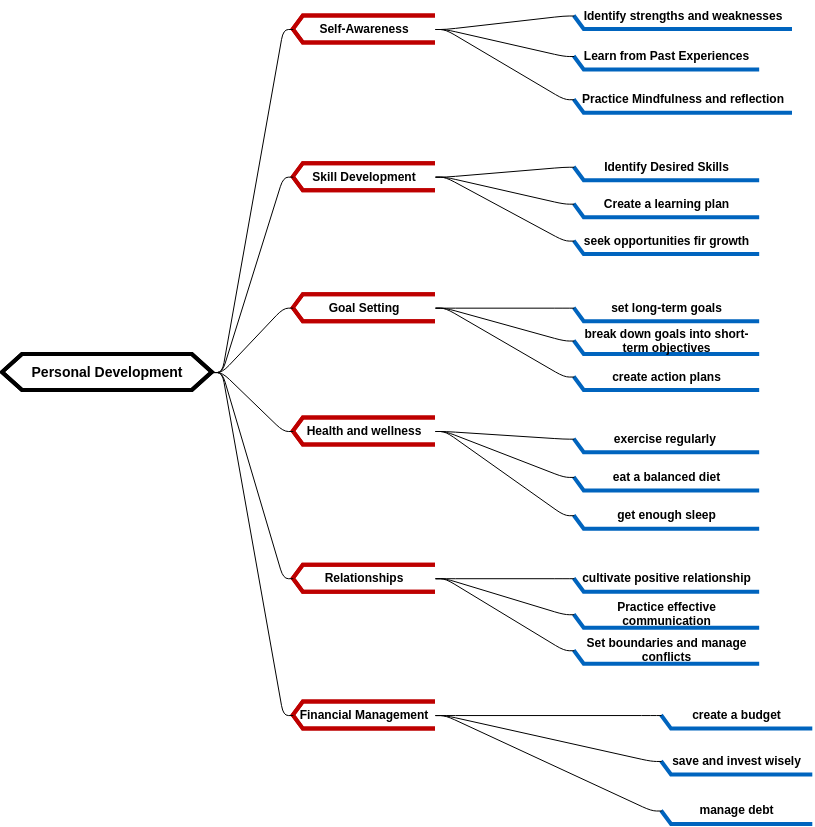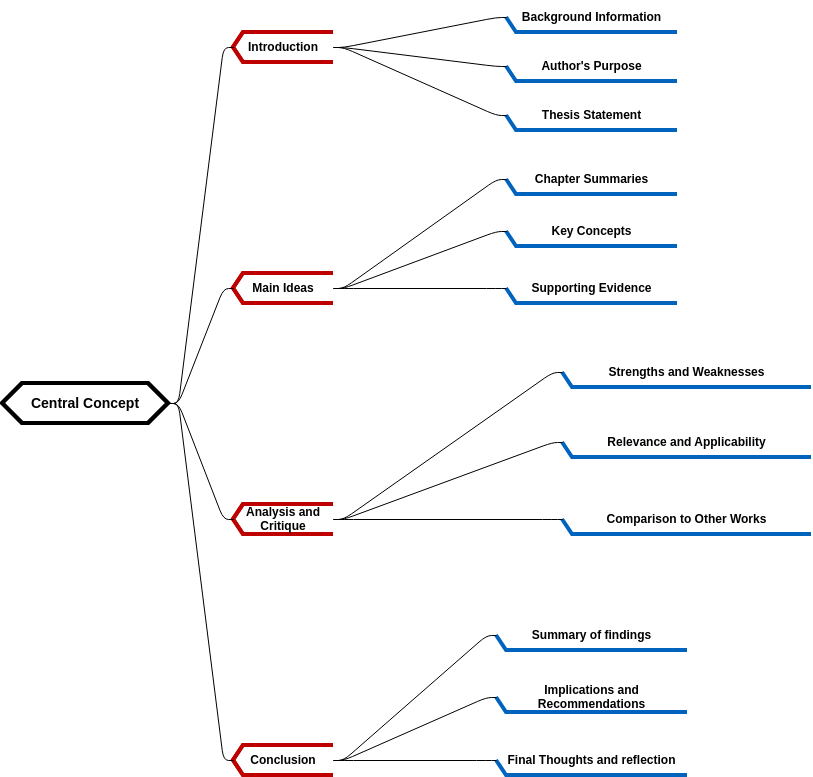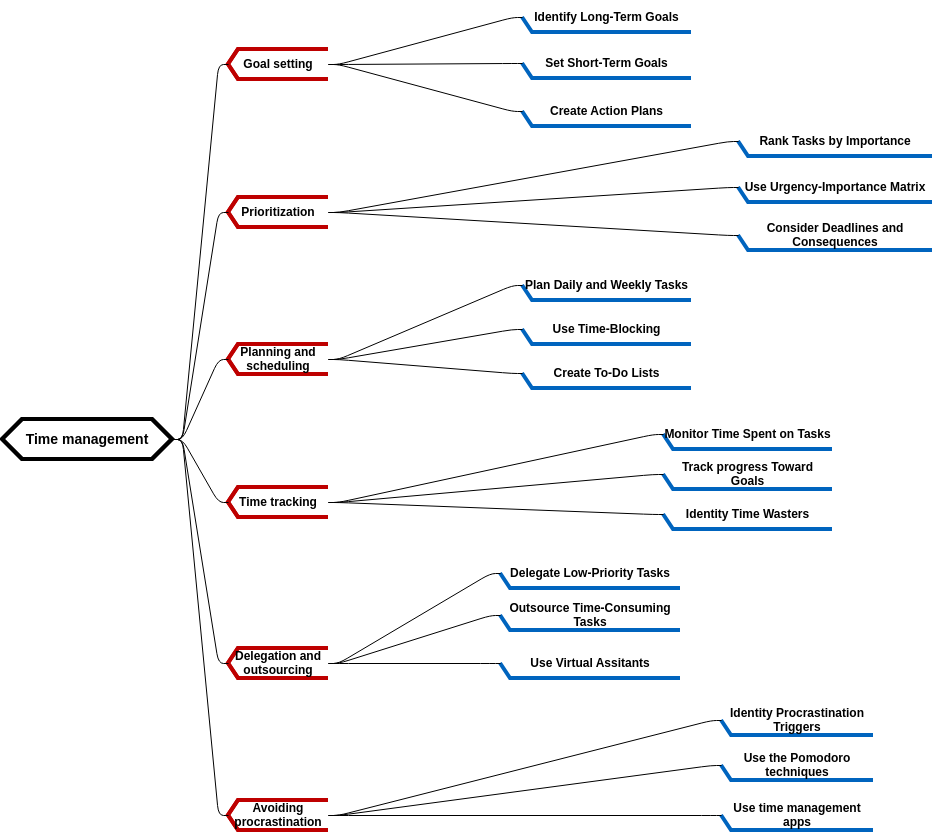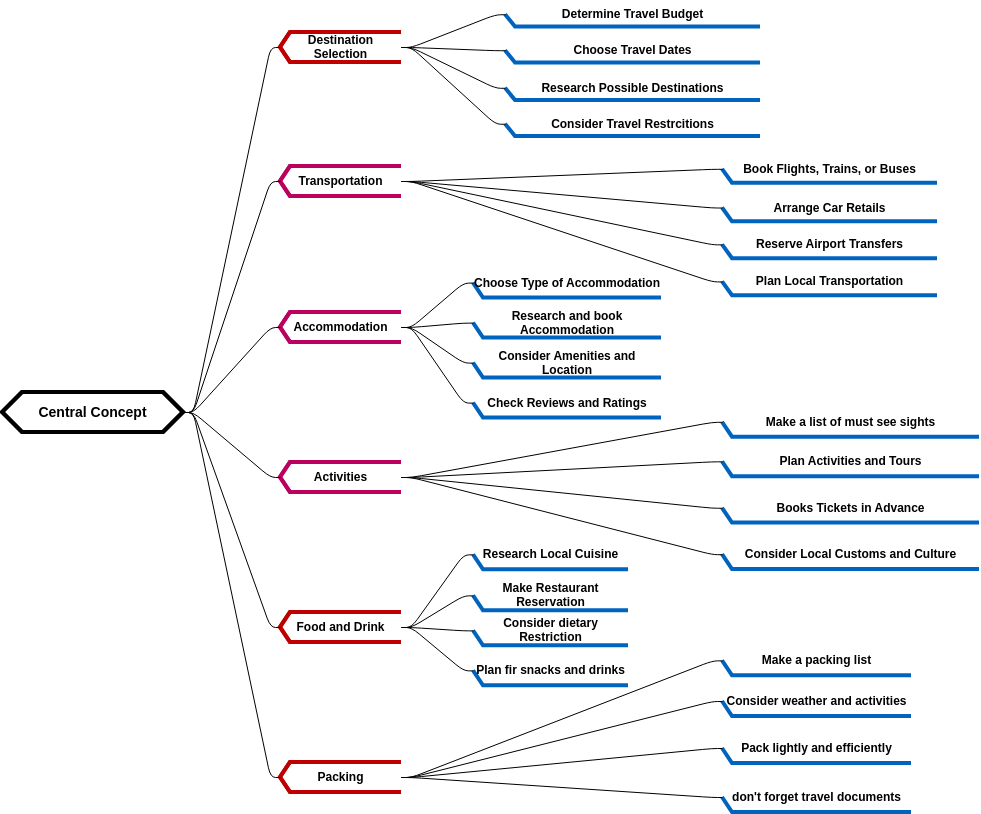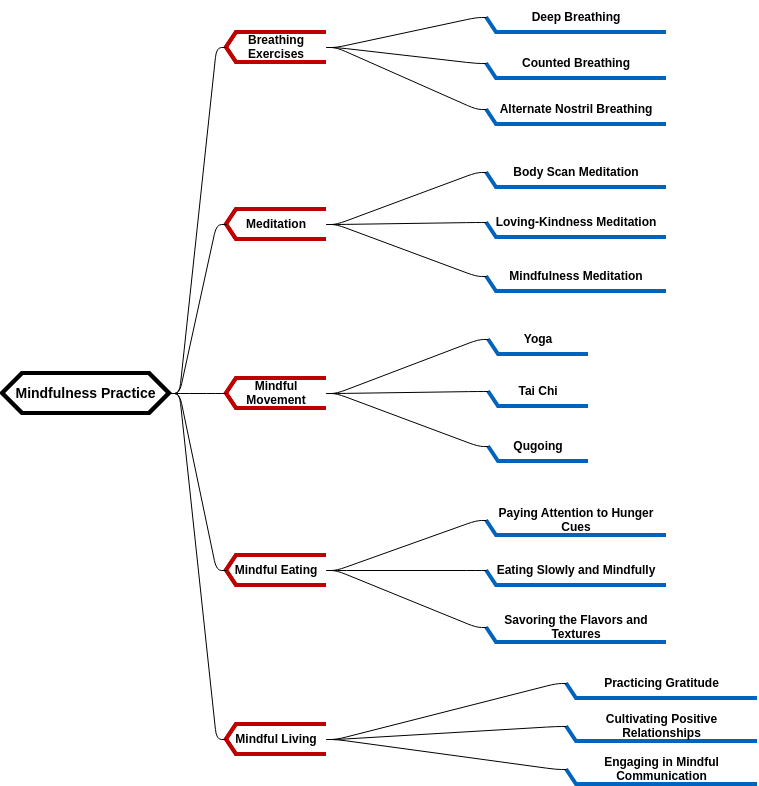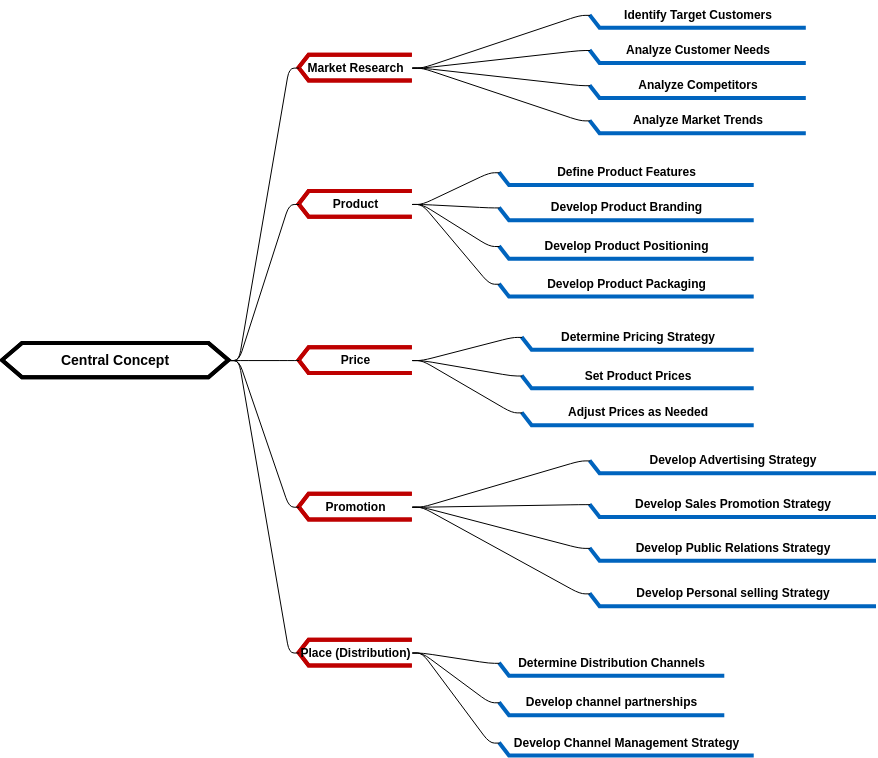The Leadership Mind Map provides a comprehensive overview of the critical components involved in effective leadership. The Mind Map lists 11 critical steps, including vision, inspiring others, communication, feedback, public speaking, decision making, creative thinking, risk management, team building, collaboration, and diversity and inclusion.
The first component, Vision, involves creating a clear and compelling vision for the organization. This step is critical as it provides direction and purpose, and helps to align individuals towards a common goal. Creating a vision requires leaders to think strategically and develop a long-term plan for the organization.
The second component, Inspiring Others, involves motivating and energizing individuals towards achieving the vision. This step is critical as it helps to create a positive and productive work environment, and fosters a sense of ownership and accountability. Leaders can inspire others through effective communication, leading by example, and recognizing and rewarding individuals for their contributions.
The third component, Communication, involves developing effective communication skills. This step is critical as it helps leaders to convey their vision and ideas clearly and effectively to others. Effective communication includes giving and receiving feedback, public speaking, and active listening.
The fourth component, Decision Making, involves making informed decisions based on creative thinking and risk management. This step is critical as it ensures that leaders can make decisions that align with the organization's vision and goals. Decision making also involves considering diversity and inclusion, and collaborating with others to make informed decisions that benefit the organization as a whole.
What is the importance of creating this mind map?
Creating a Mind Map for Leadership offers several benefits. Firstly, it provides a clear and comprehensive overview of the critical components involved in effective leadership. The Mind Map helps leaders to identify and prioritize key components such as creating a vision, inspiring others, communication, decision making, and team building. This understanding ensures that leaders can make informed decisions about their leadership style and take the necessary steps to lead their team towards success.
Secondly, the Mind Map can be used as a tool for personal and professional development. Leaders can use the Mind Map to identify areas where they need to improve and develop new skills. They can also use it to set goals and create action plans for achieving their leadership objectives. The Mind Map can be used as a reference tool to track progress and ensure that leaders are on the right track towards achieving their goals.
Are you in search of mind map templates? Head over to Visual Paradigm Online and choose from a range of designs that can be customized to suit your needs.
